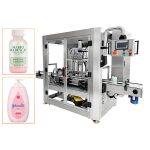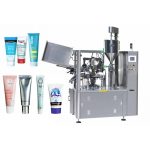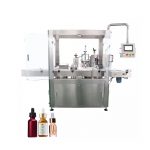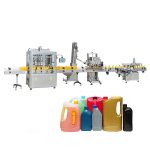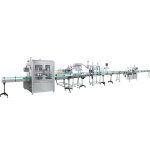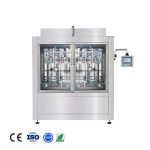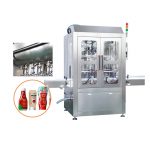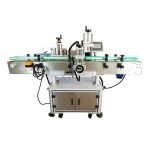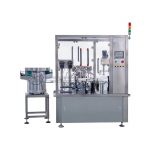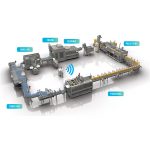An automatic bottle filling machine is a type of industrial equipment that is designed to efficiently and accurately fill bottles with a specific volume or quantity of liquid or other product. These machines are commonly used in the food and beverage, pharmaceutical, and chemical industries, as well as in other manufacturing environments where there is a need to package liquids in bottles or containers.
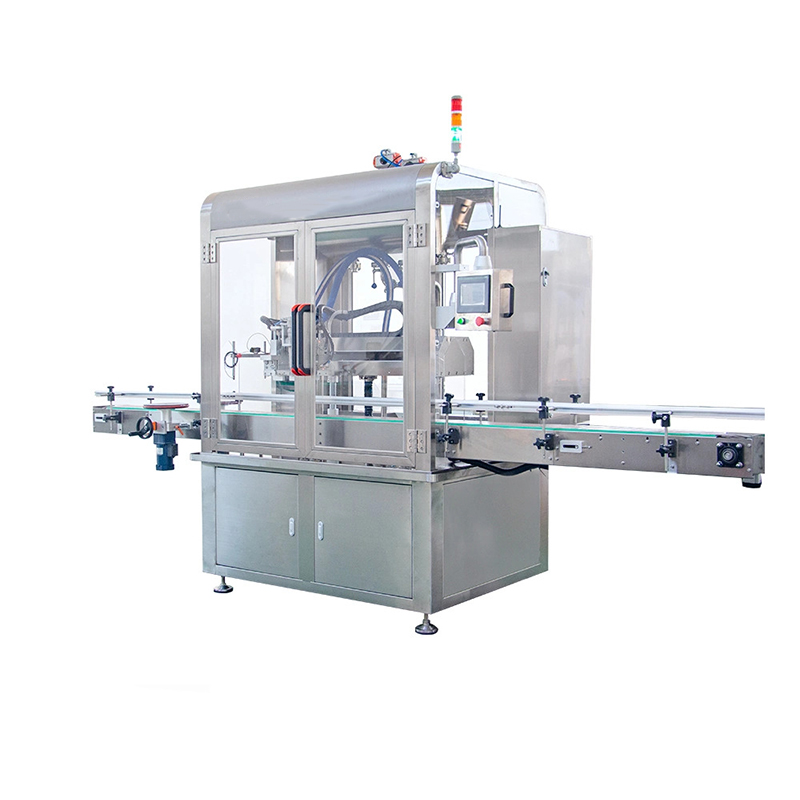
There are many different types of automatic bottle filling machines available on the market, ranging from simple, manual machines to more complex, fully automated systems. Some of the features that these machines may include are:
- Multiple filling nozzles: Depending on the size and capacity of the machine, there may be several filling nozzles that can be used to fill multiple bottles simultaneously. This can significantly increase the speed and efficiency of the filling process.
- Adjustable filling volume: Many automatic bottle filling machines come with adjustable filling volume settings, allowing the operator to set the machine to fill bottles with a specific volume of product. This ensures that each bottle is filled to the same level, which is important for maintaining consistent product quality.
- Automatic capping: Some automatic bottle filling machines are equipped with automatic capping systems that can seal the bottles once they have been filled. This can be done using screw-on caps or other types of closures, depending on the design of the machine.
- Product level sensors: Many automatic bottle filling machines are equipped with sensors that detect the level of product in the bottle as it is being filled. This helps to ensure that the bottles are filled to the correct level, without overfilling or underfilling.
- Accurate filling: Automatic bottle filling machines are designed to be highly accurate, with some systems able to fill bottles to within a few hundredths of an ounce. This is important for ensuring that the product is consistent and meets quality standards.
- Easy to use: Automatic bottle filling machines are typically easy to operate, with simple controls and intuitive user interfaces. This makes them suitable for use by operators with a wide range of skill levels.
- Durability: Automatic bottle filling machines are built to withstand the rigors of industrial environments, and are designed to be durable and reliable. Many machines come with warranties and service plans to ensure that they continue to operate at peak performance.
There are several different types of automatic bottle filling machines available on the market, including:
- Gravity filling machines: Gravity filling machines use the weight of the product itself to fill bottles. These machines are typically used for filling bottles with low-viscosity liquids, such as water or juice.
- Pressure filling machines: Pressure filling machines use pressurized tanks or containers to force the product into the bottles. These machines are typically used for filling bottles with higher-viscosity liquids, such as sauces or oils.
- Piston filling machines: Piston filling machines use a piston to dispense the product into the bottles. These machines are typically used for filling bottles with thicker liquids, such as pastes or creams.
- Volumetric filling machines: Volumetric filling machines use a measured volume to dispense the product into the bottles. These machines are typically used for filling bottles with liquids or other products that have a consistent density.
Regardless of the type of machine, automatic bottle filling systems generally consist of a number of key components, including:
- Filling nozzles: The filling nozzles are responsible for dispensing the product into the bottles. These nozzles may be gravity-fed, pressure-fed, or use other methods to dispense the product.
- Product feed system: The product feed system is responsible for delivering the product to the filling nozzles. This may involve using gravity, pressure, or a pump to move the product from a storage tank or other container to the filling nozzles.
- Conveyor system: The conveyor system is responsible for transporting the bottles through the filling machine. This may involve using a belt conveyor, roller conveyor, or other type of conveyor system to move the bottles from one station to the next.
- Filling valves: The filling valves are responsible for controlling the flow of product from the filling nozzles into the bottles. These valves may be manually operated or automatically controlled, depending on the design of the machine.
- Capping system: If the machine is equipped with an automatic capping system, this component is responsible for sealing the bottles once they have been filled. The capping system may use screw-on caps, snap-on caps, or other types of closures to seal the bottles.
- Control panel: The control panel is the hub of the automatic bottle filling machine, where the operator can enter commands and make adjustments to the machine's settings. The control panel may be a simple set of buttons and switches, or it may be a more advanced computerized system with a touchscreen interface.
Overall, automatic bottle filling machines are essential pieces of equipment for many manufacturing and packaging operations. These machines can significantly increase the speed and efficiency of the filling process, while also ensuring that the product is accurately and consistently filled to the desired level.

